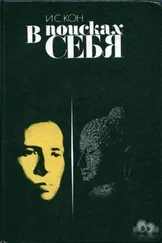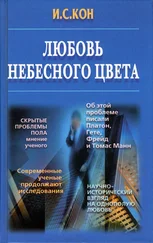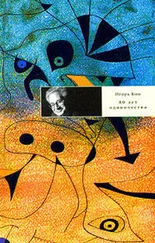Ascham R. The Schoolmaster. NY: Da Capo Press, 1968.
Aucoirt К. J., Frick P. J., Bodirt S. D. Corporal punishment and child adjustment // Journal of Applied Developmental Psychology. 2006. Vol. 27. № 6. P. 527–541.
Ayer A. J. Replies // Perception and Identity / G. Macdonald, ed. London: Macmillan, 1979.
Bankart С. P., Bankart В. M. Japanese children’s perceptions of their parents // Sex Roles. 1985. Vol. 13. P. 679–690.
Barry H. III. Corporal punishment and other formative experiences associated with violent crimes // Journal of Psychohistory. 2007. Vol. 35. № 1.
Barry H. 3-d, JosephsonL., Lauer E., Marshall C. Agents and techniques for child training: Cross-cultural codes 6 // Ethnology. 1977. Vol. 16. P. 191–230.
Baumrind D. Child care practices anteceding three patterns of preschool behavior // Genetic Psychology Monographs. 1967. Vol. 75. № 1. P. 43–88.
Baumrind D. The discipline controversy revisited // Family Relations. 1996. Vol. 45. P. 405–414.
Baumrind D. Does established knowledge support public policy recommendations enjoining normative physical discipline (PD)?: Paper presented at the Biennial Meeting of the Society for Research in Child Development. Tampa, FL. 2003. April.
Baumrind D., Larzelere R. E., Cowan P. A. Ordinary physical punishment: Is it harmful? Comment on Gershoff (2002) // Psychological Bulletin. 2002. Vol. 128. № 4. P. 580–589.
Bedau H. A. Punishment // Stanford Encyclopedia of Philosophy, 2010 (http://plato.Stanford. edu/entries/punishment).
Benjet C., KazdinA. E. Spanking children: The controversies, findings, and new directions // Clinical Psychology Review. 2003. Vol. 23. P. 197–224.
Berlin L. J., Malone P. S., Ayoub C. et al. Correlates and consequences of spanking and verbal punishment for low-income white, African American, and Mexican American toddlers // Child Development. 2009. Vol. 80. № 5. P. 1403–1420.
Bremrter J. D. Long-term effects of childhood abuse on brain and neurobiology // Child Adolesc. Psychiatr. Clin. N. Am. 2003. Vol. 12. P. 271–292.
Bugental D. B., Martorell G. A., Barraza V. The hormonal costs of subtle forms of infant maltreatment // Horm Behav. 2003. Vol. 43. № 1. P. 237–244.
Bussman K. D. Evaluating the subtle impact of a ban on corporal punishment of children in Germany // Child Abuse Review. 2004. Vol. 13. P. 292–311.
Bussman K. D., Erthal С., Schroth A. The effect of banning corporal punishment in Europe: a five-nation comparison. Martin-Luther-Universitat, Halle-Wittenberg, Germany // Manuscript. October 2009.
Chandos J. Boys Together. English Public Schools 1800–1864. Yale University Press, 1984.
Chang I. J., Pettit R. W., Katsurada E. Where and when to spank: a comparison between U.S. and Japanese college students // Journal of Family Violence. 2007. Vol. 21. № 1. P. 281–286.
Churchill W. S. My Early Life. London: Odhams Press Ltd., 1941.
Connolly P. H. Psychological functioning of bondage/dominance/ sado-masochism (BDSM) practitioners // Journal of Psychology & Human Sexuality. 2006. Vol. 18. P. 79—120.
Corporal punishment in Japan: gobsmacking = results // http:// whatjapanthinks.com/2008/07/03/corporal-punishment-in-japan-gobsmacking-results//.
Crandall M. Chiu B., Sheehan K. Injury in the First Year of Life: Risk Factors and Solutions for High-Risk Families // Journal of Surgical Res. 2006. Vol. 133. Issue 1. P. 7—10.
Cross P. A., Matheson K. Understanding sadomasochism: an empirical examination of four perspectives // T he Journal of Homosexuality. 2006. Vol. 50. № 2–3. P. 133–166.
Dayton J. J. D. Corporal punishment in public schools: The legal and political battle continues // Education Law Reporter. 1994. Vol. 89. P. 729–740.
Deater-Deckard K., Dodge K. A. Externalizing behavior problems and discipline revisited: Nonlinear effects and variation by culture, context, and gender // Psychological Inquiry. 1997. Vol. 8. № 3. P. 161–175.
Deater-Deckard K., Dodge K. A., Bates J. E., Pettit G. S. Physical discipline among African American and European American mothers: Links to children’s externalizing behaviors // Developmental Psychology. 1996. Vol. 32. № 6. P. 1065–1072.
Deater-Deckard K., Lansford J. E., Dodge K. A., Pettit G. S., Bates J. E. The development of attitudes about physical punishment: an 8-year longitudinal study // J. Fam. Psychol. 2003. Vol. 17. P. 351–360.
De Zoysa P., Newcombe P. A., Rajapakse L. Corporal punishment in the Sri Lankan context: Psychological outcomes for our children // D. M. Devore (Ed.). New Developments in Parent-Child Relations Hauppauge. NY: Nova Science, 2006. P. 1—40.
Discipline and Punishment of Children: A Rights-Based Review of Laws, Attitudes and Practices in East Asia and the Pacific. Bangkok: Save the Children Sweden. Disgraceful Affair at Hounslow // http://www.stmgrts.org.uk/archives/2010/01/the_disgraceful_affair_at_hounslow.html.
Dixon W. E. 20 studies that shook up child psychology// Developments: Newsletter of the Society For Research On Child Development. 2003. Vol. 46. № 1.
Douglas E. M. Familial violence socialization in childhood and later life approval of corporal punishment: A cross-cultural perspective // American Journal of Orthopsychiatry. 2006. Vol. 76. № 1. P. 23–30.
Drey N., Pastoetter J., Pryce A. Sex-Study 2008 – Sexual Behaviour in Germany. DGSS and City University London in Collaboration with ProSieben. Duesseldorf – London, 2008.
Dugan C. The Origins of Spanking Fetish // http://nospank.net/dugan5.htm. 1996.
Durr ant J. E. Law reform and corporal punishment in Sweden: Response to Robert Larzelere, The Christian Institute, and Families First. Winnepeg, Canada: Department of Family Social Sciences. University of Manitoba, 2005.
Durrant J. E., Janson S. Law reform, corporal punishment and child abuse: The case of Sweden // International Review of Victimology. 2005. Vol. 12. P. 139–158.
Durrant J. E., Rose-Krasnor L., BrobergA. G. Physical punishment and maternal beliefs in Sweden and Canada // Journal of Comparative Family Studies. 2003. Vol. 34. P. 586–604.
Durrant J. et al. Punitive Violence Against Children in Canada // 41E CECW Information Sheet 1. 2006.
Dussich J. P. J., Maekoya Chie. Physical child harm and bullying-related behaviors: A comparative Study in Japan, South Africa, and the United States // International Journal of Offender Therapy and Comparative Criminology. 2007. Vol. 51. № 5. P. 495–509.
Ember C. R., Ember M. War, socialization, and interpersonal violence: A cross-cultural study // Journal of Conflict Resolution. 1994. Vol. 38. P. 620–646.
Ember C. R., Ember M. Explaining corporal punishment of children: A cross-cultural study // American Anthropologist. 2005. Vol. 107. № 4. P. 609–619.
Erlanger H. S. Social class and corporal punishment in child-rearing: A reassessment //American Sociological Review. 1974. Vol. 39. № 1. P. 68–85.
Farrington D. P. Conduct disorder, aggression, and delinquency // Handbook of Adolescent Psychology. Second ed. / Ed. By R. M. Lerner, L. Steinberg. N.Y.: Willey, 2004. P. 626–664.
Federal Ministry of Justice & Federal Ministry for Family Affairs, Senior Citizens, Women and Youth. Violence in upbringing: An assessment after the introduction of the right to a non-violent upbringing. 2003.
Fedoroff J. P. Paraphilic Worlds // Handbook of Clinical Sexuality for Mental Health Professionals / S. Levine (Ed). New York: Routledge, 2010. Chapter 23. P. 401–424.
Читать дальше
Конец ознакомительного отрывка
Купить книгу












